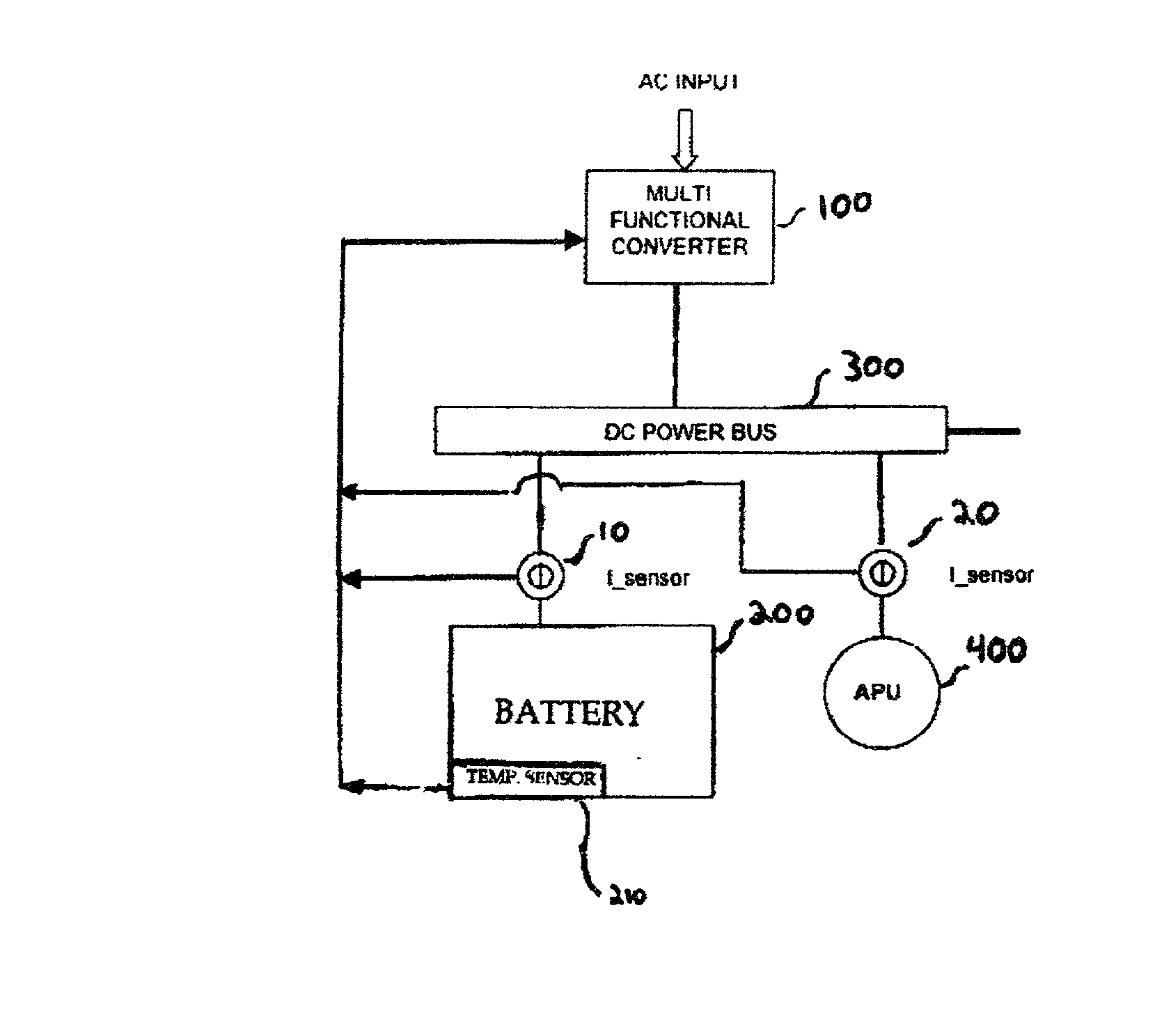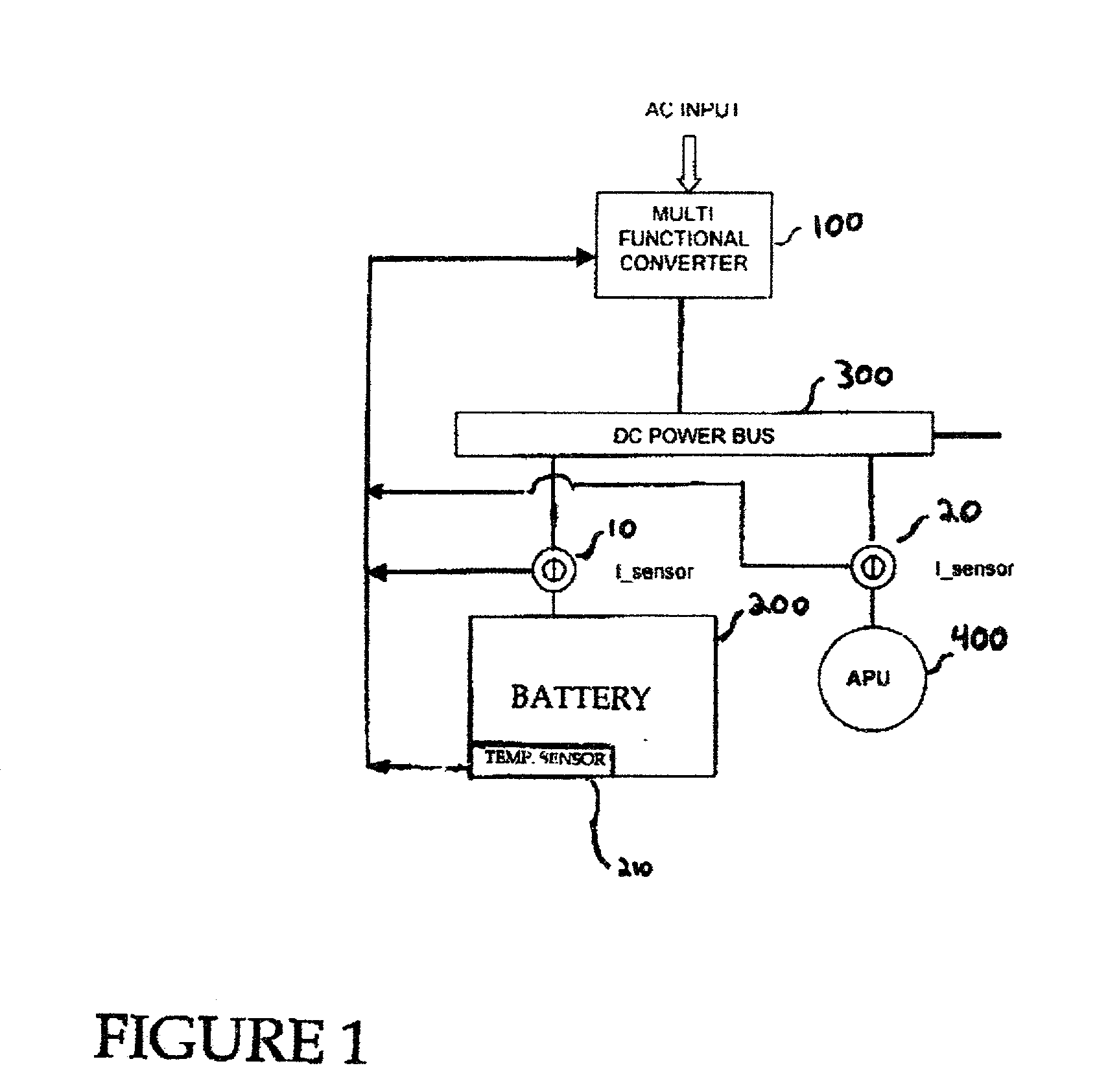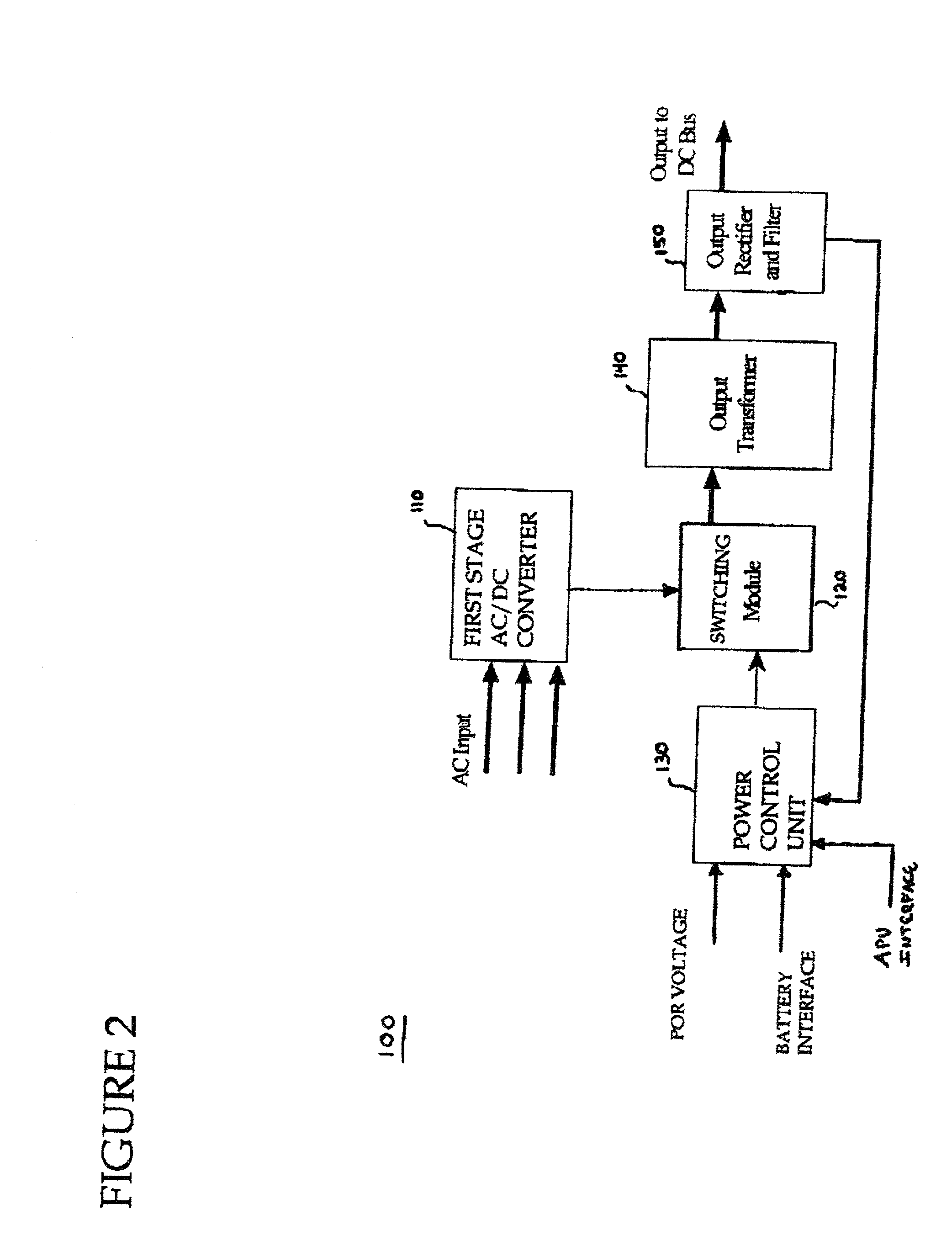Multi-functional AC/DC converter
a converter and multi-functional technology, applied in the direction of electric vehicles, electric power, transportation and packaging, etc., can solve the problems of tru output voltage not enabling a constant potential or constant current charging mode, neither limiting the current flowing into the battery, and tru has been considered unsuitable for charging batteries, etc., to achieve and efficient charging of the battery connected to the bus
- Summary
- Abstract
- Description
- Claims
- Application Information
AI Technical Summary
Benefits of technology
Problems solved by technology
Method used
Image
Examples
Embodiment Construction
[0017] FIG. 1 illustrates an exemplary implementation of a multifunctional AC to DC converter and its integration into a typical aerospace DC Subsystem according to the present invention. In the exemplary implementation shown in FIG. 1, a multi-functional converter 100, a battery 200, and an auxiliary power unit 400 are connected to a DC power bus 300, which may be one of multiple DC power buses of an aircraft power subsystem. It should be readily apparent that various electrical loads and other elements may be connected to the DC power bus 300. The multi-functional converter 100 receives an AC input (e.g., 115 or 230 Vac) and outputs a voltage that is regulated in accordance with principles of the present invention discussed in detail below. A battery current sensor 10 is provided between the DC power bus 300 and the battery 200 to monitor current flow to the battery 200. Likewise, an APU current sensor 20 is provided between the DC power bus 300 and the APU 400 to monitor current ...
PUM
 Login to View More
Login to View More Abstract
Description
Claims
Application Information
 Login to View More
Login to View More - R&D
- Intellectual Property
- Life Sciences
- Materials
- Tech Scout
- Unparalleled Data Quality
- Higher Quality Content
- 60% Fewer Hallucinations
Browse by: Latest US Patents, China's latest patents, Technical Efficacy Thesaurus, Application Domain, Technology Topic, Popular Technical Reports.
© 2025 PatSnap. All rights reserved.Legal|Privacy policy|Modern Slavery Act Transparency Statement|Sitemap|About US| Contact US: help@patsnap.com



